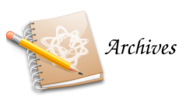Water cooler
If Wikimedia UK can help you improve Wikimedia projects, check out our grants page.

|
| 2009 2010 2011 2012 2013 2014 2015 2016 2017 |
Kanban for editathons

I just saw the newsletter with a picture of the kanban board used at the Women in Classical Studies editathon. What a great idea! It helps people share what they are working on. Helps to avoid edit conflicts. Enables organisers to list all the articles that have been improved. It could possibly work well for a recap session at the end too, where people talk about the changes they made.
Who was involved with that editathon? Who has used it elsewhere? I would love to hear how it has been used in practice.
Yaris678 (talk) 15:09, 3 February 2017 (GMT)
- Hi Yaris678, I was the lead trainer at the Women in Classical Studies editathon. I saw the kanban in an Instagram post for an Art+Feminism editathon. It worked much better than expected - a fantastic indicator of the achievements of the day.Eartha78 (talk) 19:02, 3 February 2017 (GMT)
- The group were quite well prepared prior to the editathon. They had identified a number of articles to create - some had already done the research and started to writing in their sandbox. When we began the second part of the editathon they each committed to an article, wrote it on a sticky note and stuck it to the wall! Moving the notes from left to right was surprisingly motivating and a good excuse to stretch ones legs. Also used the sticky notes for an evaluation exercise at the end of the session. Eartha78 (talk) 18:27, 16 February 2017 (GMT)
Training from the back of the room
Another idea for editathons: Training from the back of the room. I recently went to a training course that used this approach and it was really good. I think it would work particularly well with something like an editathon, which isn't branded as training.
Rough outline of how it could work:
- After basic intros, etc, ask people to stand up and arrange themselves in order of experience of editing Wikipedia. Speak to the people next to get an idea of their experience.
- Get the people at each end of the group to talk a little bit about there experience, so we all know the range of experience in the room.
- Split the group into small teams of ~4 people. Say that is 4 groups, number the line 1,2,3,4,1,2,3,4... etc and everyone with the same number is in the same group. That way the teams all have a range of experience.
- Get people to explain to their team mates:
- What they normally do on Wikipedia
- What they would like to do today
- Anything they see that might stop them from achieving what they want to do today
- If there are specific articles to edit, these can go on the kanban board
- Perhaps other types of aims like "understand referencing" should be written on a flip chart that each team has
- Organisers should also bring topics to put on the kanban board
- Encourage people to work as a team on a topics
- The best way to do this needs thinking about, perhaps something like Mob programming
- Perhaps do something like two people look at references. One (relatively inexperienced) person does the typing and one person guides that person.
- The general idea is to encourage people to work together and share there skills
- If we have a number of trained trainers at the editathon, they would still be part of a team, and help their team achieve its goals.
